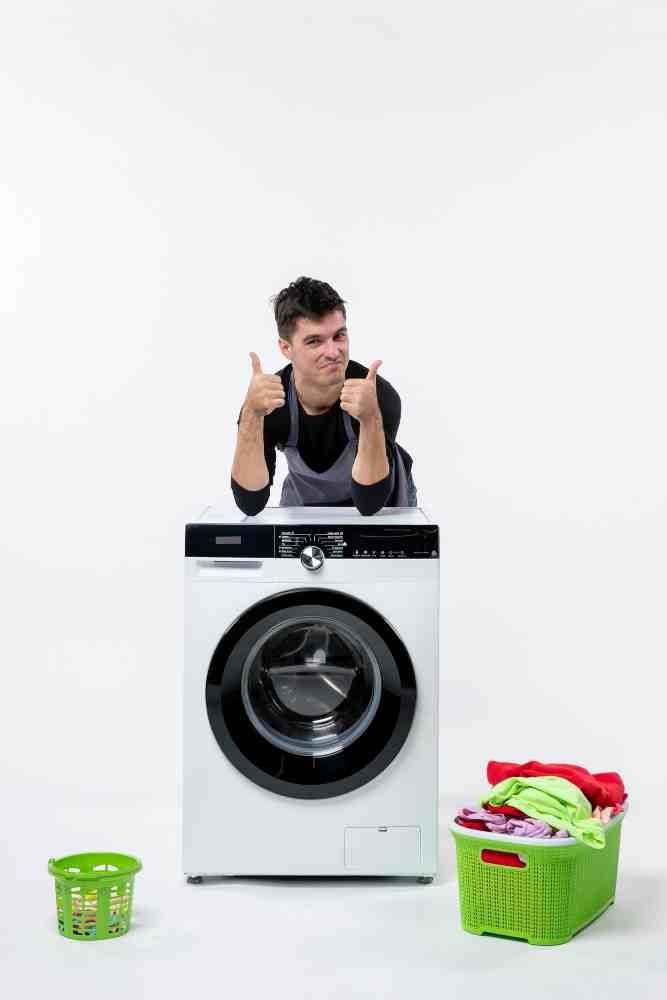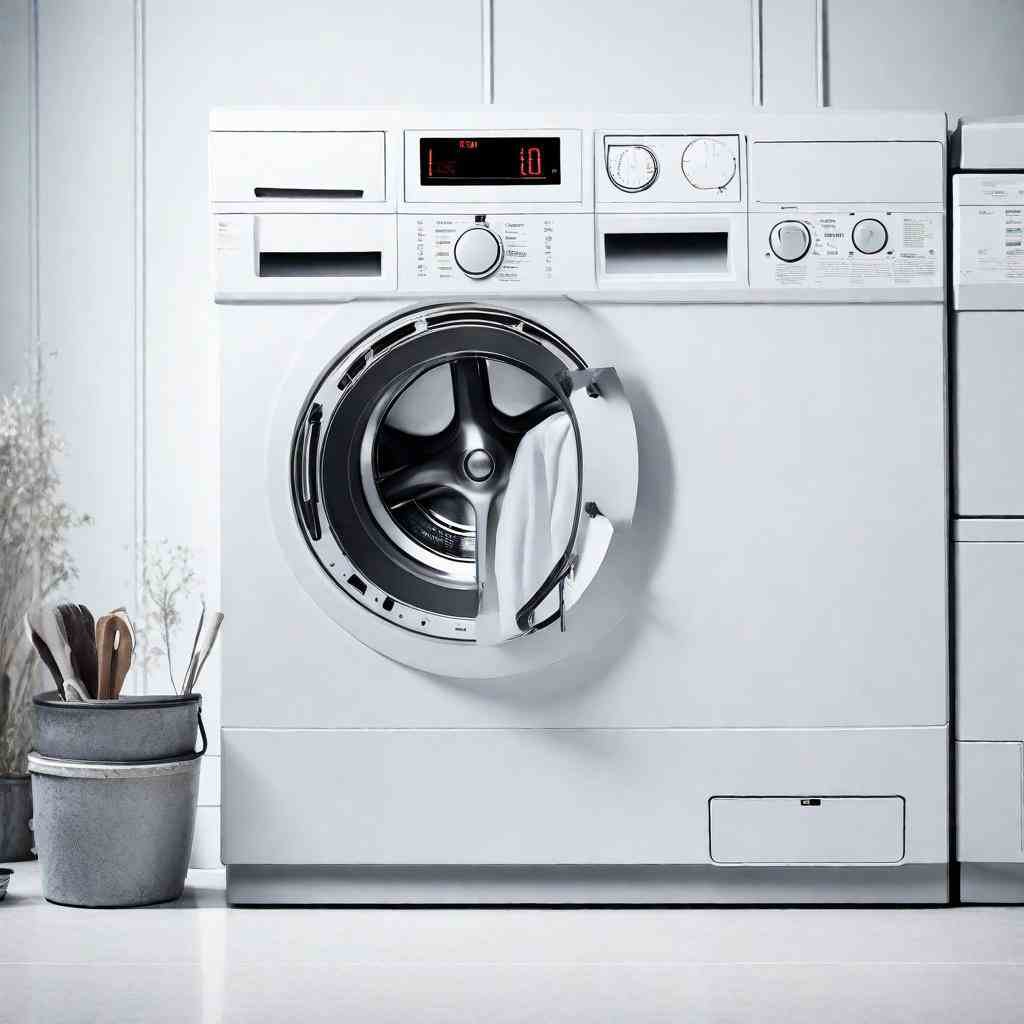 how washing machine timer work
how washing machine timer work
Introduction
. A brief overview of the importance of understanding how washing machine timers work.
. Introduce the concept of washing machine timers and their role in the laundry process.
I. The Basics of Washing Machine Timers
.Explanation of what a washing machine timer is.
. Highlight the crucial role it plays in the overall functionality of a washing machine.
III. Components of a Washing Machine Timer
. Break down the different components that make up a washing machine timer.
. Discuss the functions of each component in detail.
IV. How Washing Machine Timers Coordinate Cycles
. Explore the synchronization of timer functions during different washing machine cycles.
. Detail how timers manage water intake, agitating, rinsing, and spinning.
V. Common Issues with Washing Machine Timers
. Address common problems that users may encounter with washing machine timers.
. Provide troubleshooting tips for resolving timer-related issues.
VI. Importance of Regular Maintenance
. Emphasize the significance of maintaining washing machine timers.
. Offer practical tips for users to keep their timers in optimal condition.
VII. Technological Advancements in Washing Machine Timers
. Discuss innovations and technological improvements in modern washing machine timers.
. Highlight any smart features or advancements that have enhanced user experience.
VIII. How to Replace a Faulty Washing Machine Timer
. Step-by-step guide on replacing a malfunctioning timer for DIY enthusiasts.
. Recommend professional assistance for complex timer replacements.
IX. Tips for Prolonging the Life of a Washing Machine Timer
. Provide useful tips for users to extend the lifespan of their washing machine timers.
. Encourage preventive measures to avoid common timer issues.
X. Energy Efficiency and Washing Machine Timers
. Explore the relationship between timer usage and energy efficiency.
. Provide insights into how optimizing timer settings can contribute to energy conservation.
XI. User-Friendly Features in Modern Washing Machine Timers
. Discuss user-friendly features that manufacturers incorporate into timers.
. Highlight the convenience these features bring to users.
XII. Consumer Reviews and Feedback on Washing Machine Timers
. Showcase real-world experiences of users with various washing machine timers.
. Summarize positive feedback and address common concerns.
XIII. Comparisons Between Traditional and High-Tech Timers
. Compare the pros and cons of traditional versus high-tech washing machine timers.
. Assist readers in making informed decisions based on their preferences and needs.
XIV. Future Trends in Washing Machine Timer Technology
. Offer a glimpse into the potential advancements and trends in washing machine timer technology.
. Discuss how these trends may shape the future of laundry appliances.
Conclusion
. Summarize key takeaways from the article.
. Reiterate the importance of understanding and maintaining washing machine timers.

Q.How Washing Machine Timers Work: A Deep Dive into Laundry Time Management
The washing machine timer, an often-ignored component, plays a major role in the efficiency of these machines, which have become an essential part of our everyday life.
We’ll explore the complex features of washing machine timers and solve their technical secrets in this post.
I. Overview
The ease of owning a dependable washing machine is immeasurable in our fast-paced society.
However, few people are actually familiar with these gadgets’ internal mechanisms.
This article aims to bridge that knowledge gap by shedding light on the crucial role played by washing machine timers.
II. The Basics of Washing Machine Timers
At its core, a washing machine timer is a device responsible for orchestrating the various cycles of a laundry load.
From filling the drum with water to agitating, rinsing, and spinning, the timer ensures a seamless and efficient washing process.
III. Components of a Washing Machine Timer
To comprehend how timers function, it’s essential to break down their components.
The timer comprises several intricate parts, each with a specific role in the laundry choreography.
Understanding these elements is key to troubleshooting and maintaining the timer.
IV. How Washing Machine Timers Coordinate Cycles
A closer look at how timers synchronize different cycles provides insight into the complexity of their operations.
Discover the dance of water intake, agitating, rinsing, and spinning as the timer conducts a symphony of movements to achieve clean clothes.
V. Common Issues with Washing Machine Timers
As with any machinery, washing machine timers aren’t immune to glitches.
This section addresses common problems users may encounter and offers practical solutions to keep the timer ticking smoothly.
VI. Importance of Regular Maintenance
Prevention is often more straightforward than cure. Learn the significance of regular maintenance and gain valuable tips to keep your washing machine timer in top-notch condition, ensuring longevity and reliability.
VII. Technological Advancements in Washing Machine Timers
In the age of smart appliances, washing machine timers have also undergone significant advancements.
Explore the latest innovations that make laundry a breeze, from intuitive controls to energy-efficient features.
VIII. How to Replace a Faulty Washing Machine Timer
For the DIY enthusiasts among us, a step-by-step guide on replacing a malfunctioning timer is provided.
However, it’s crucial to recognize when professional assistance is necessary for more complex replacements.
IX. Tips for Prolonging the Life of a Washing Machine Timer
Unlock the secrets to extending the life of your washing machine timer with practical tips that any user can implement.
From proper usage habits to routine checks, these tips ensure a reliable timer performance.
X. Energy Efficiency and Washing Machine Timers
Discover the impact of timer settings on energy efficiency. By optimizing your washing machine timer, you not only save on energy costs but also contribute to environmental conservation.
XI. User-Friendly Features in Modern Washing Machine Timers
Manufacturers are constantly enhancing user experience by incorporating user-friendly features into timers.
Find out how these features cater to the needs and preferences of the modern consumer.
XII. Consumer Reviews and Feedback on Washing Machine Timers
Real-world experiences from users provide invaluable insights.
Delve into consumer reviews to understand the strengths and weaknesses of various washing machine timers, helping you make an informed purchase.
XIII. Comparisons Between Traditional and High-Tech Timers
For those torn between tradition and innovation, a comprehensive comparison between traditional and high-tech timers is presented.
This section aims to guide users in choosing the timer that aligns with their lifestyle.
XIV. Future Trends in Washing Machine Timer Technology
Peek into the future as we explore potential trends and advancements in washing machine timer technology.
Stay ahead of the curve by understanding how these trends may shape the landscape of laundry appliances.
Conclusion
In conclusion, a washing machine timer is not just a mundane component; it’s the maestro orchestrating the symphony of your laundry routine.
Understanding its functions, maintaining it diligently, and embracing technological advancements will ensure a seamless and efficient laundry experience.

Frequently Asked Questions:
1.How often should I perform maintenance on my washing machine timer?
Regular maintenance is recommended at least once every six months to ensure optimal performance.
Can I replace a washing machine timer myself?
Simple replacements can be done by DIY enthusiasts, but complex issues may
3.How do you set a washing machine timer?
Setting a washing machine timer is as easy as pie! First, choose your preferred cycle – delicate, regular, or heavy-duty.Next, change the spin speed and temperature as desired.
Finally, press the start button to unleash the magic! Just a few clicks, and your laundry adventure is underway.
4.How do you use a washing machine without a timer?
To use a washing machine without a timer, select your desired settings based on fabric type, load size, and cleanliness level.
Initiate the wash cycle, periodically monitor progress, and adjust settings if needed.
Estimate washing times through experience and plan chores accordingly.
Embrace the flexibility for a customized and efficient laundry experience.
5.How do we set a washing machine to start automatically after 5 hours?
Setting your washing machine to start automatically after 5 hours is a breeze.
First, load your laundry and select the desired wash cycle. Then, navigate to the delayed start or timer option on your machine.
Adjust the timer to 5 hours, confirm your settings, and voila! Your washing machine will kick into action exactly when you want it to, making laundry time fit seamlessly into your schedule.
6.Can a front load washing machine be stopped in between a timer?
Of course! You can choose to halt or pause the cycle at any time, even in the middle of the cycle, while using a front-load washing machine.
To add or remove objects, just press the pause or stop button, wait for the door to unlock, then repeat as necessary.
It’s a practical feature that gives your laundry routine more versatility.
7.How does a timer affect the effectiveness of a washing machine?
A timer is the maestro of a washing machine, orchestrating each step of the laundry process.
It ensures the right duration for water intake, agitation, rinsing, and spinning.
A well-functioning timer optimizes the cleaning process, contributing to the overall effectiveness of the washing machine by precisely coordinating each cycle for efficient and thorough cleaning.
8.How do you know if the timer motor on your washing machine is bad?
If you suspect a bad timer motor in your washing machine, observe for the following signs:
1. Cycle Irregularities: If the machine skips or gets stuck in certain cycles, it could indicate a malfunctioning timer motor.
2. No Advancement: If the timer doesn’t progress through the cycle or the machine doesn’t move to the next phase, the timer motor may be faulty.
3. Complete Cycle Failure:If the washing machine fails to complete a full cycle, it’s a strong indicator of timer motor issues.
4. Unusual Noises:Strange noises during the cycle, such as grinding or clicking, may suggest problems with the timer motor.
5. Lack of Power:If the machine doesn’t start or respond to controls, the timer motor could be a culprit.
If you notice any of these signs, it’s advisable to consult a professional technician for a thorough inspection and potential timer motor replacement.
9.how does washing machine works?
A washing machine works by combining water, detergent, and mechanical action to clean clothes.
It fills with water, agitates the clothes, drains dirty water, rinses, and spins to remove excess water, completing the process.
Modern machines often have various cycles and settings for different fabrics and levels of dirt.
10.how to use time delay on washing machine?
Using a time delay feature on a washing machine allows you to set a specific time for the machine to start its cycle.
This can be convenient if you want your laundry to finish at a particular time or take advantage of off-peak electricity rates.
Here’s a general guide on how to use the time delay function on a washing machine:

1. Read the Manual:
Start by reading the user manual of your washing machine.
Different models may have slightly different procedures, and the manual will provide specific instructions for your appliance.
2. Load the Laundry:
Load your laundry into the washing machine as you normally would. Be sure to follow any guidelines regarding the type of clothes and detergent you’re using.
3. Select the Wash Cycle:
Choose the wash cycle and other settings according to your preferences and the type of laundry you’re washing.
4. Locate the Time Delay Button:
Find the time delay button on your washing machine’s control panel. This button might be labeled as “Delay Start,” “Timer,” or something similar.
5. Set the Delay Time:
Press the time delay button and use the corresponding controls to set the desired delay time.
This could be in hours or in a specific time format, depending on the machine.
6. Confirm and Start:
Once you’ve set the delay time, confirm your selection according to the machine’s instructions. This may involve pressing a “Start” or “Delay Start” button.
7. Wait for the Countdown:
After confirming the time delay, the washing machine will begin a countdown until it starts the cycle. Some machines may display the remaining time on a digital screen.
8. Monitor and Adjust:
Throughout the delay period, you may be able to check the remaining time or make adjustments if needed. Some machines allow you to cancel or modify the delay before it starts.
9. Unload When Finished:
Once the washing machine completes the cycle, open the door and unload your laundry.
Remember that the specific steps may vary based on the brand and model of your washing machine.
If you can’t find the time delay feature or encounter any issues, refer to your user manual or contact the manufacturer’s customer support for assistance.
11.What is use of timer in a washing machine?
The timer function in a washing machine, often referred to as the time delay or delay start feature, allows users to schedule when a laundry cycle should begin.
This feature is designed to offer flexibility and convenience, and it serves several practical purposes:
1. Energy Efficiency:
Users can take advantage of off-peak electricity hours by setting the washing machine to start during times when energy rates are lower.
This can help save on electricity costs and contribute to overall energy efficiency.
2. Convenience:
The timer function is useful for those who want their laundry to finish at a specific time, such as when they return home from work or wake up in the morning.
This way, freshly washed clothes are ready when needed.
3. Noise Reduction:
If your washing machine tends to be noisy during operation, you can schedule the cycle to start during a time when the noise won’t be disruptive, such as when household members are away or sleeping.
4. Time Management:
Planning laundry cycles with the timer feature allows for better time management.
You can set the machine to start its cycle while you’re away, ensuring that the laundry is completed when you return.
5. Delaying for Soaking or Pre-Wash:
Some users may prefer to delay the start to allow for soaking or pre-washing before the main washing cycle begins.
This can be particularly useful for heavily soiled or stained garments.
Here’s a simple example of how to use the timer function:
– Suppose you want to start a laundry cycle at 7:00 AM, but you’ll be leaving for work at 8:00 AM.
You can set the timer for a one-hour delay, ensuring that the washing machine starts automatically at 7:00 AM, and the cycle is complete before you leave.
It’s important to consult your washing machine’s user manual for specific instructions on how to use the timer feature, as the process may vary depending on the brand and model of the appliance.
12.what is delay start in washing machine?
Delay start in a washing machine, also known as time detention or timekeeper detention, is a point that allows druggies to record when a laundry cycle should begin.
rather of starting the washing machine incontinently, you can set a specific time for the machine to initiate the marshland cycle.
This point offers druggies lesser inflexibility and convenience in managing their laundry.
Then are some crucial points about the detention start function
1. Convenience
Delay launch is accessible for individualities who want their laundry to be completed at a particular time.
For illustration, you can set the detention start in the evening, and the washing machine will begin its cycle during the night, icing your clothes are ready in the morning.
2. Off- Peak Energy operation
druggies can take advantage of out- peak electricity hours by cataloging the washing machine to start during times when energy rates are lower.
This can contribute to energy effectiveness and potentially reduce electricity costs.
3. Noise operation
If your washing machine tends to be noisy during operation, the detention start point allows you to record the cycle to begin when menage members are down or during times when noise is lower of a concern.
4. Pre-Soaking or Pre-Washing
Some druggies may use the detention start function to allow for pre-soaking or pre-washing before the main marshland cycle begins.
This is helpful for treating heavily be mired or stained garments.
5. Time Management
druggies can more manage their time by setting the washing machine to start at a time that suits their schedule.
This can be particularly useful for busy individualities who want to insure their laundry is done when they return home.
To use the detention start point, consult your washing machine’s stoner primer for specific instructions.
generally, you will need to elect the detention launch option on the control panel and also set the asked detention time in hours or a specific time format.
After attesting your settings, the washing machine will begin the cycle at the listed time.


3 thoughts on “how washing machine timer work”